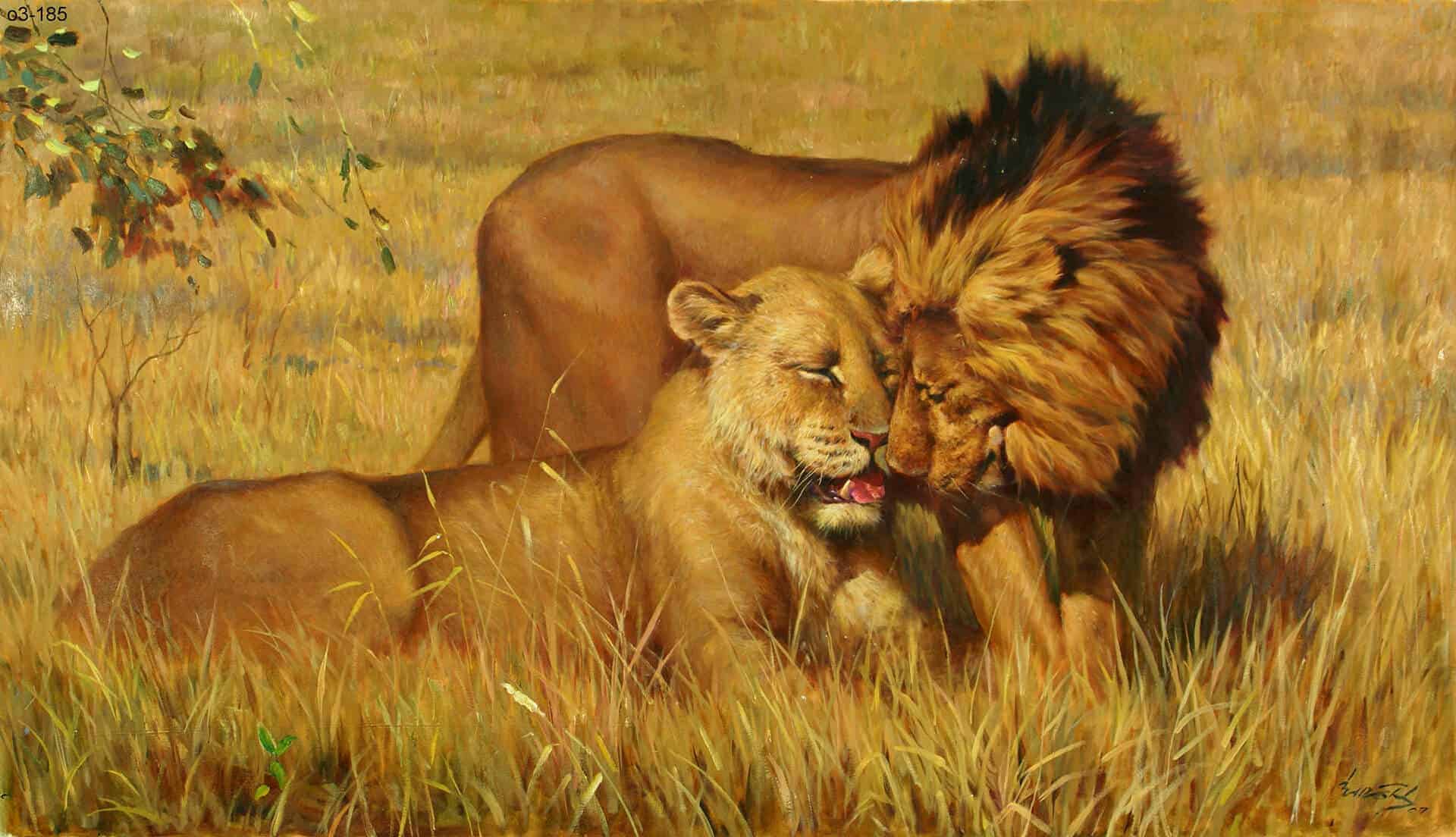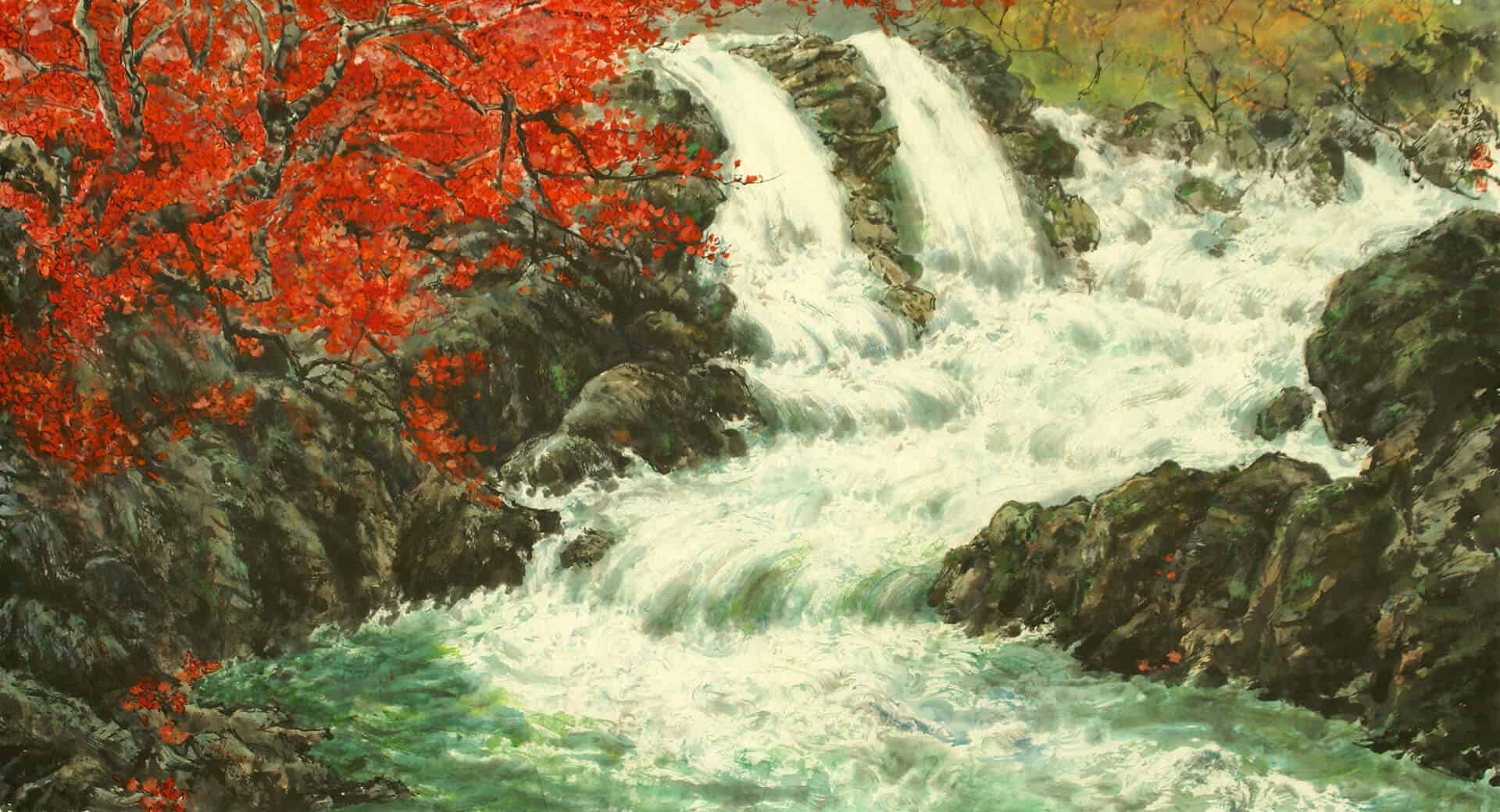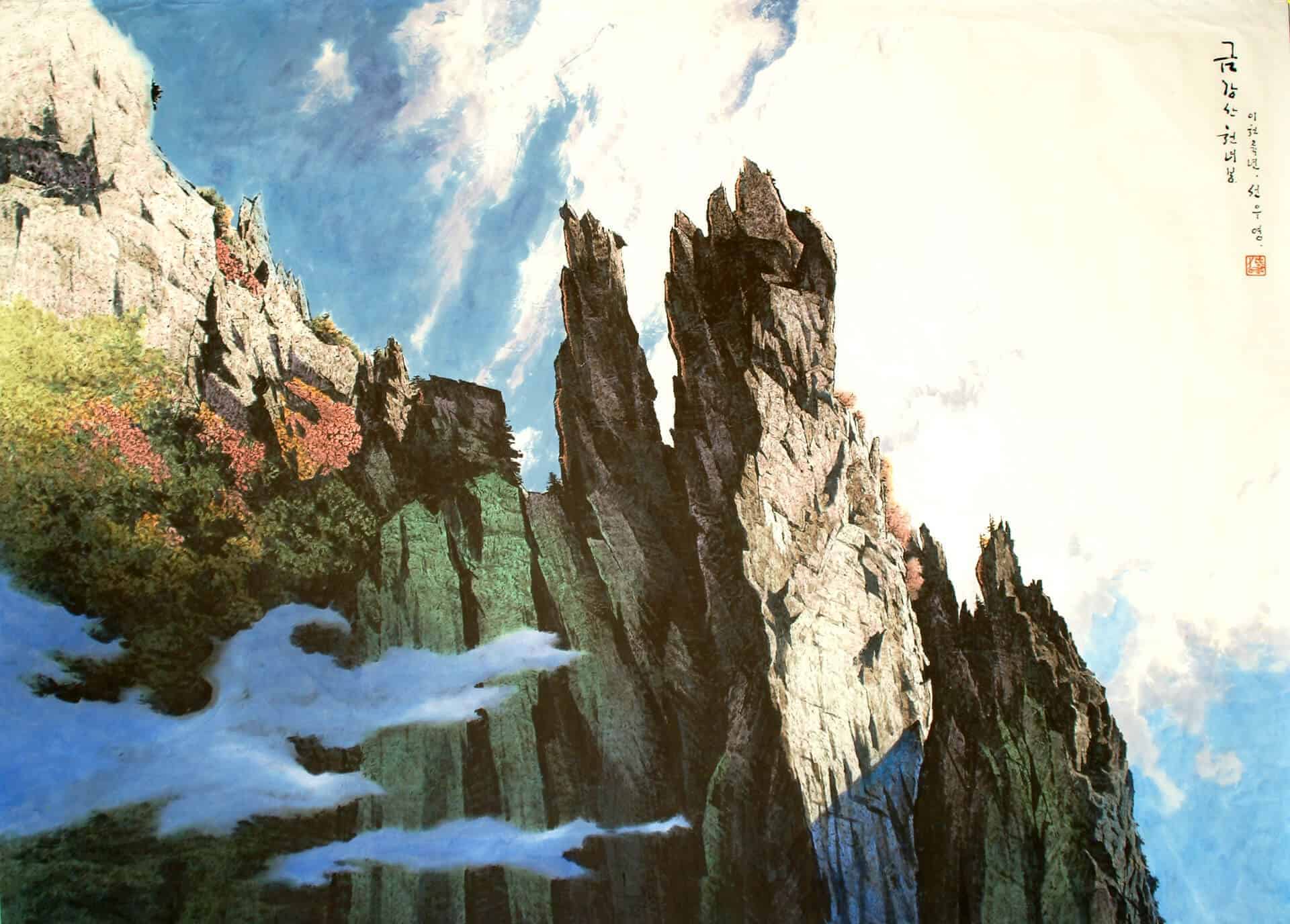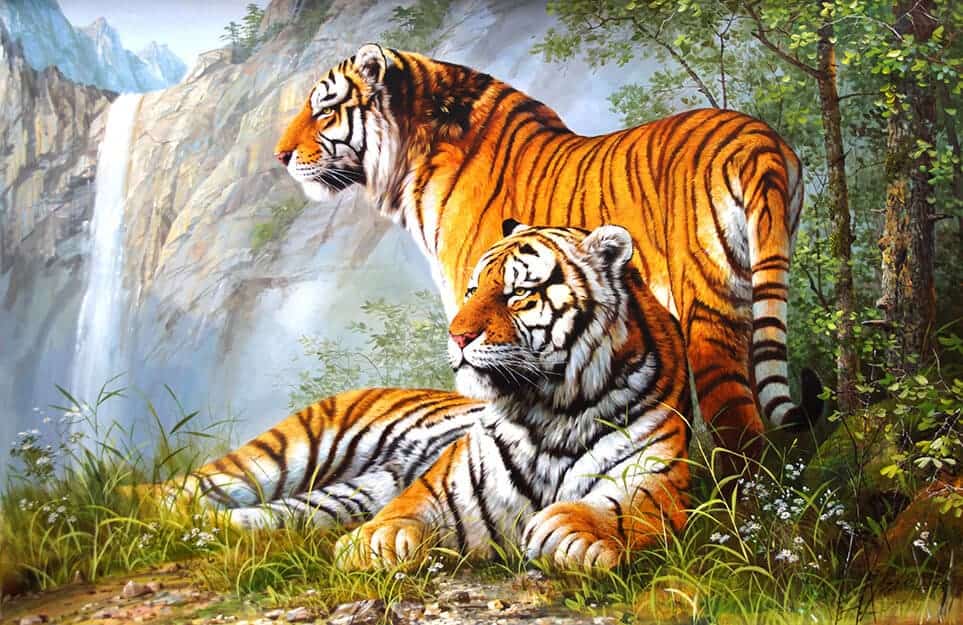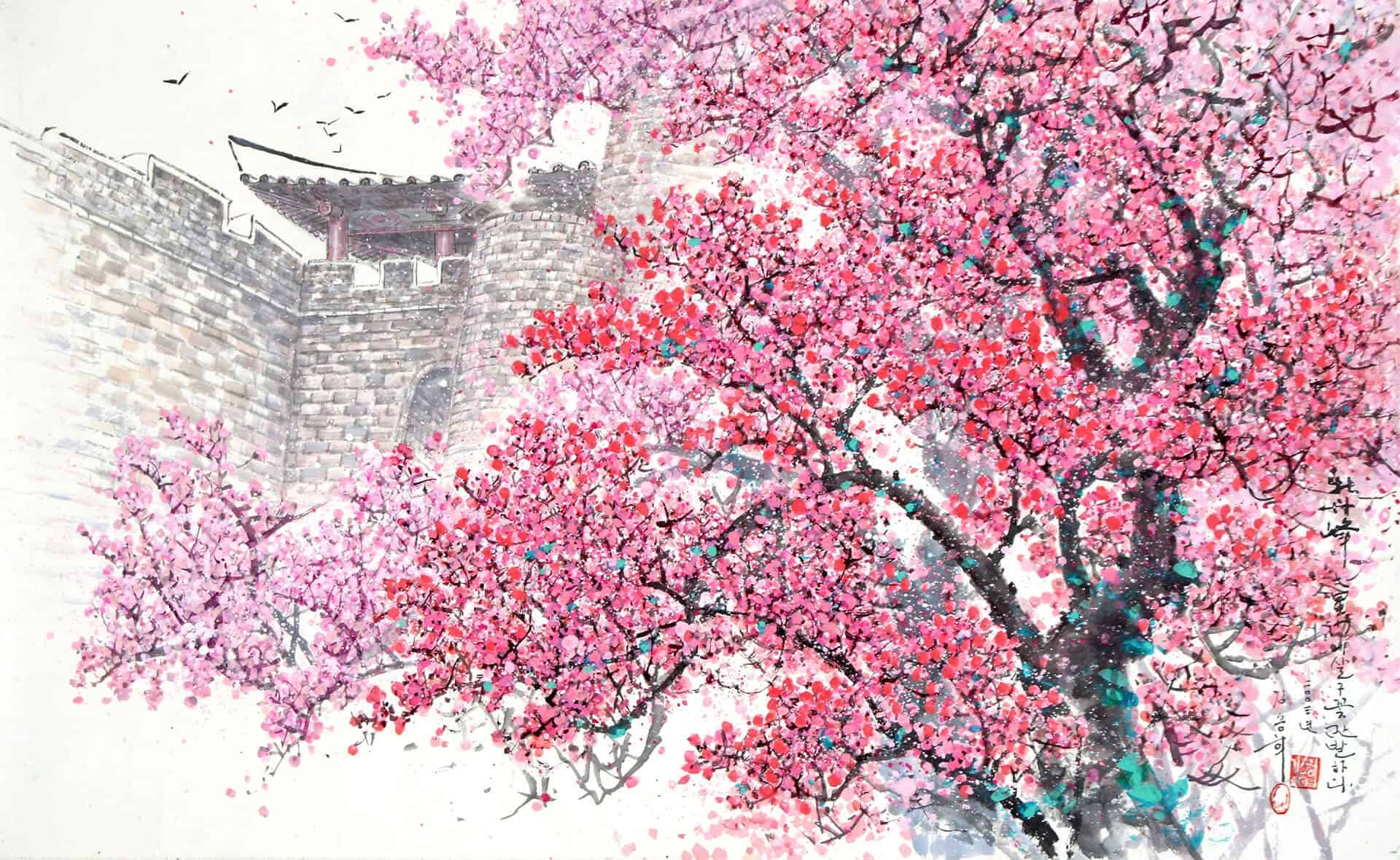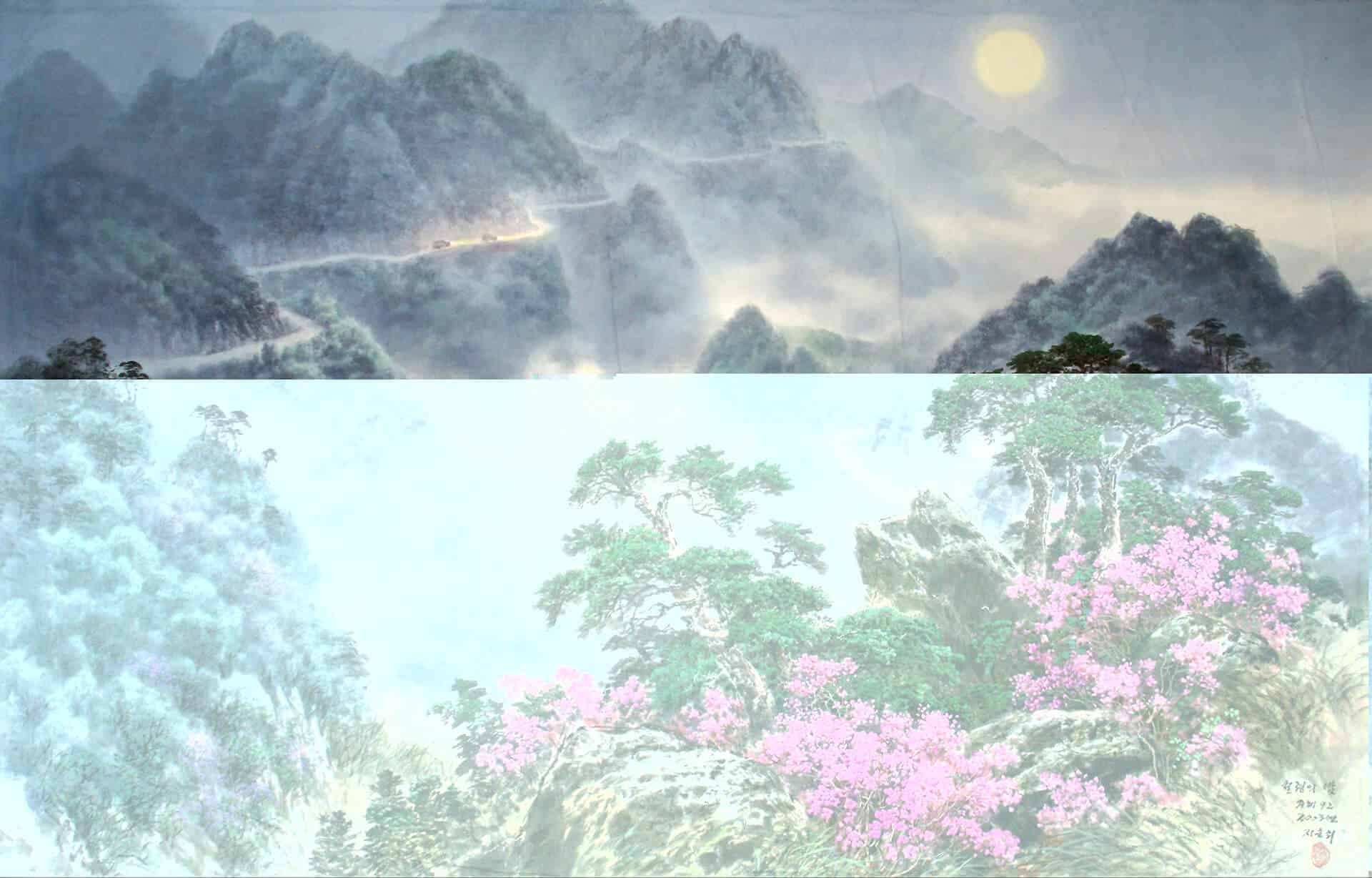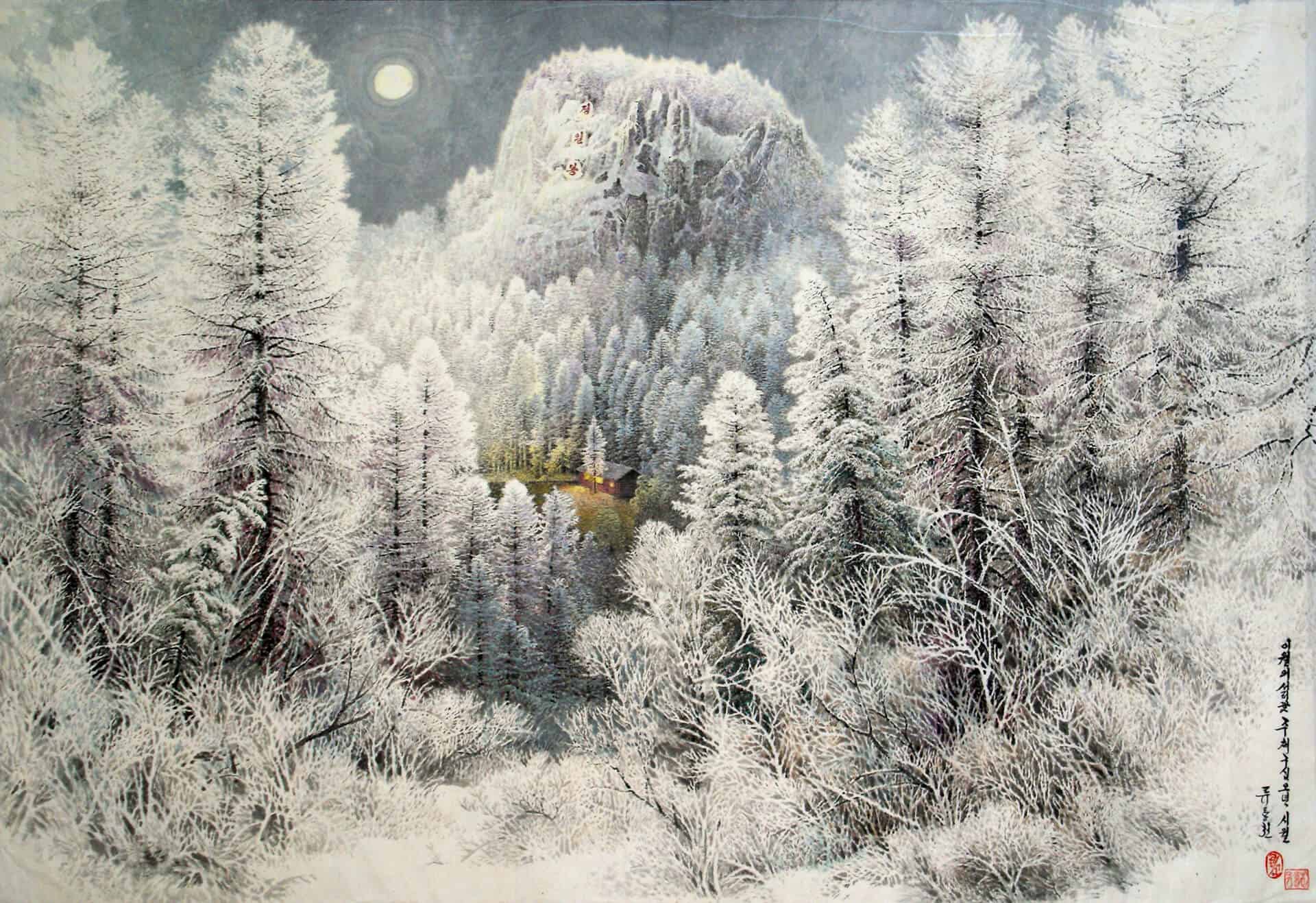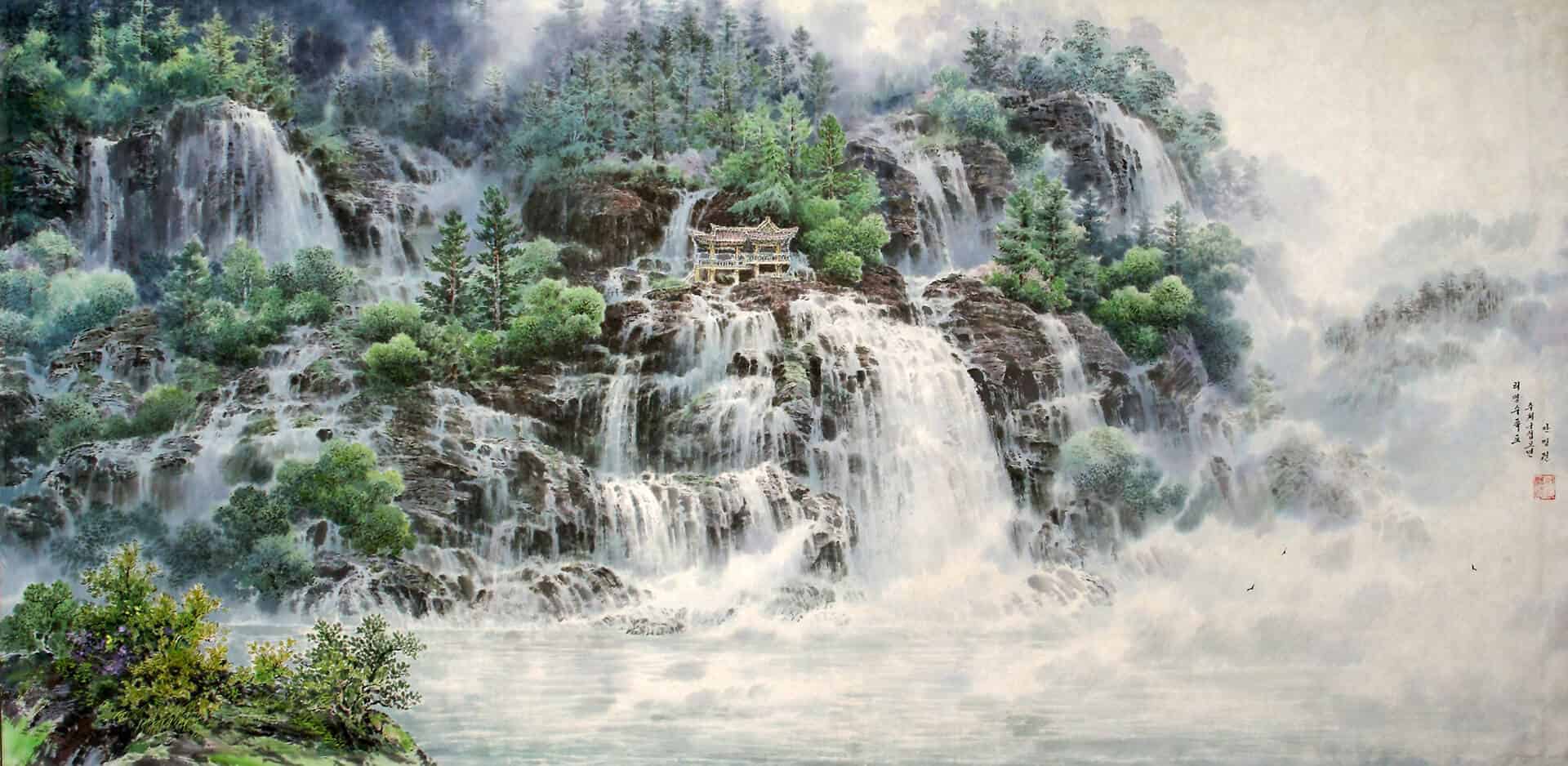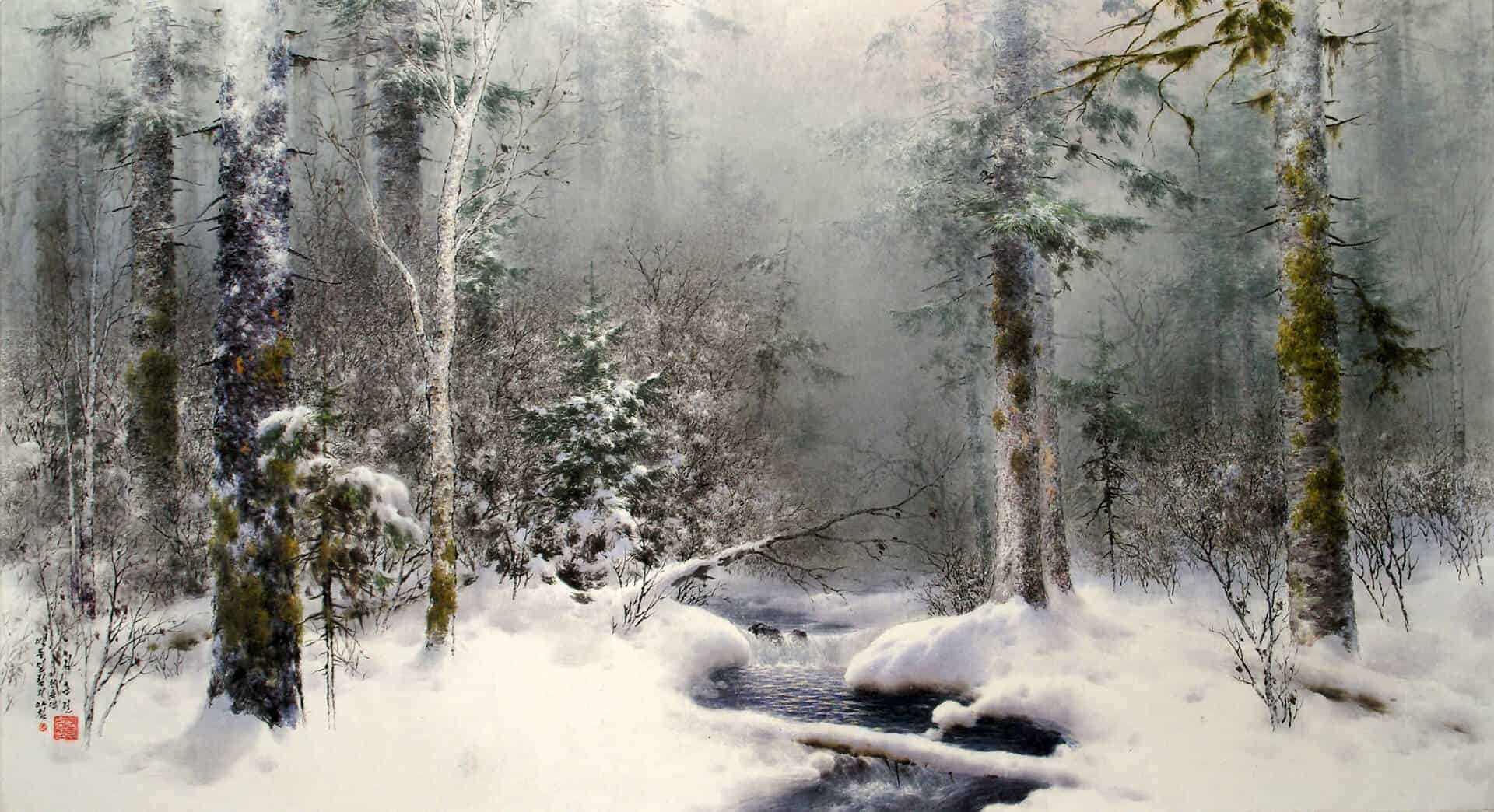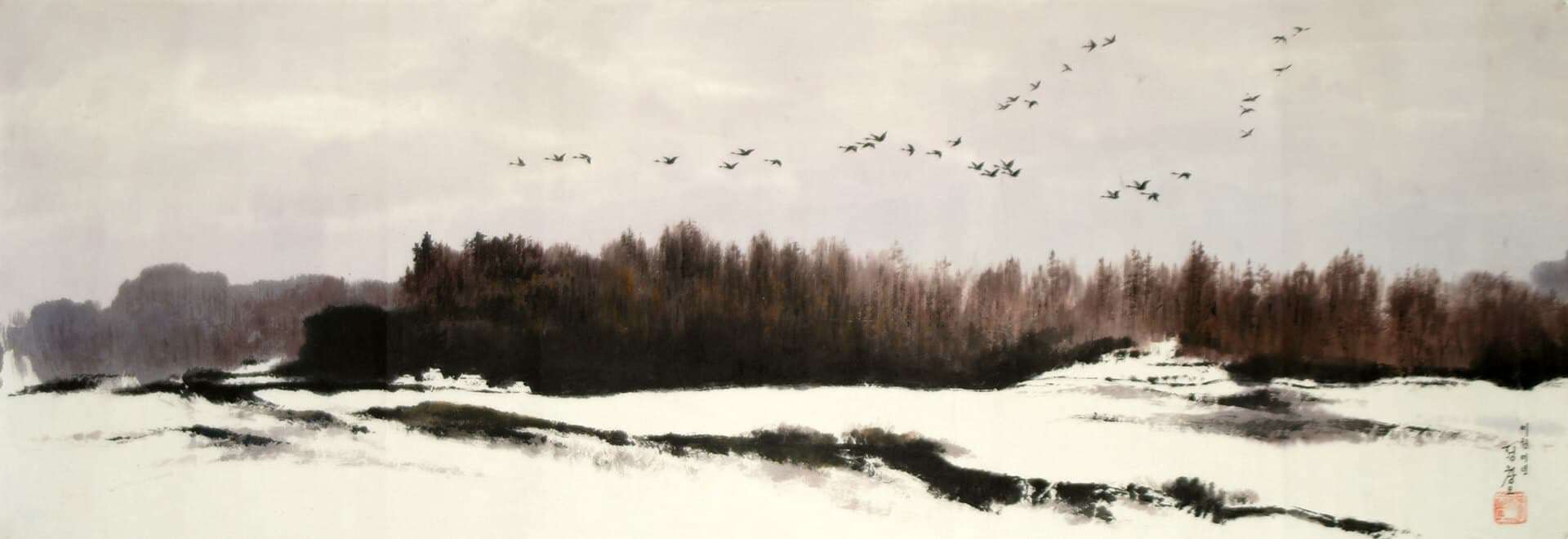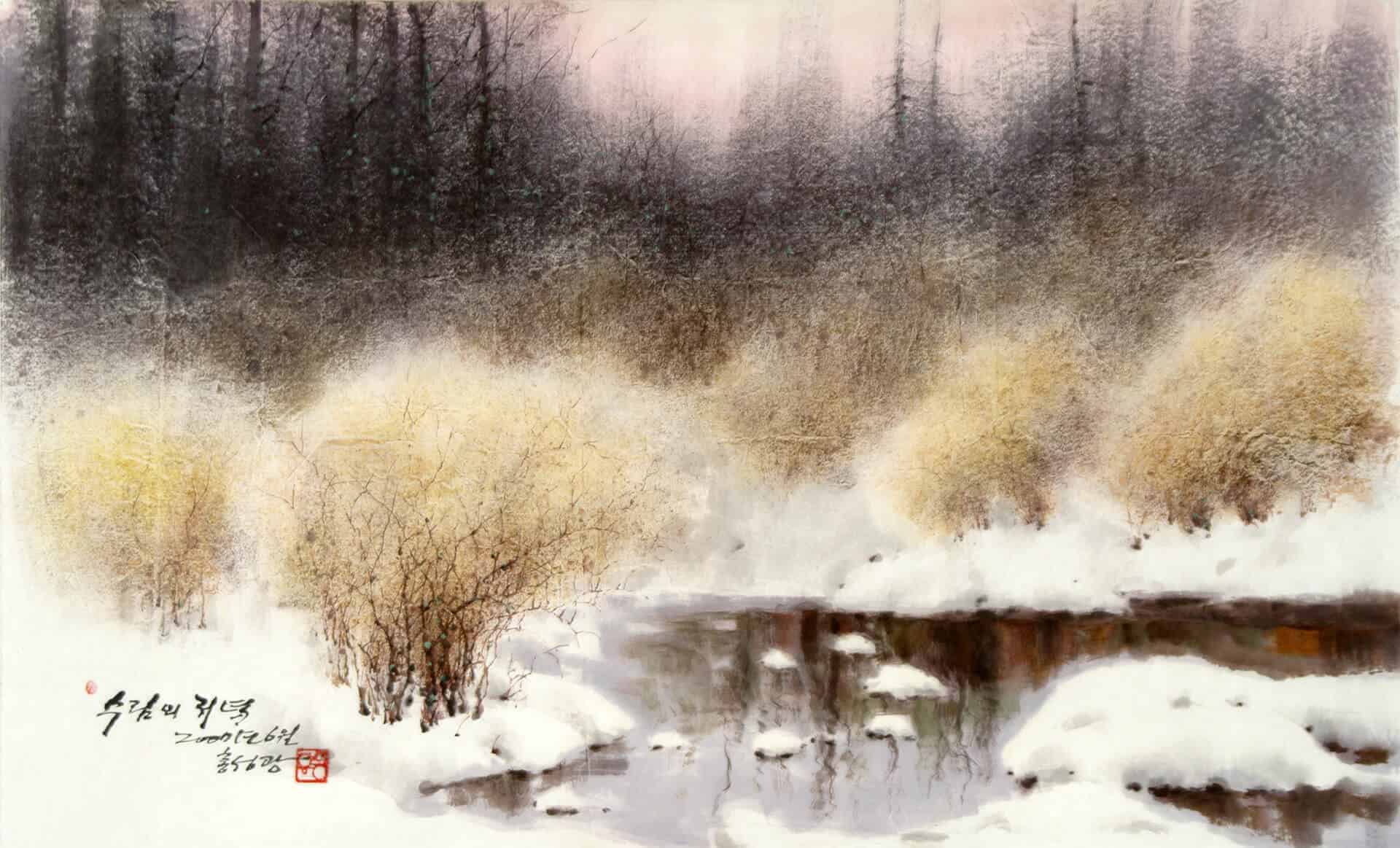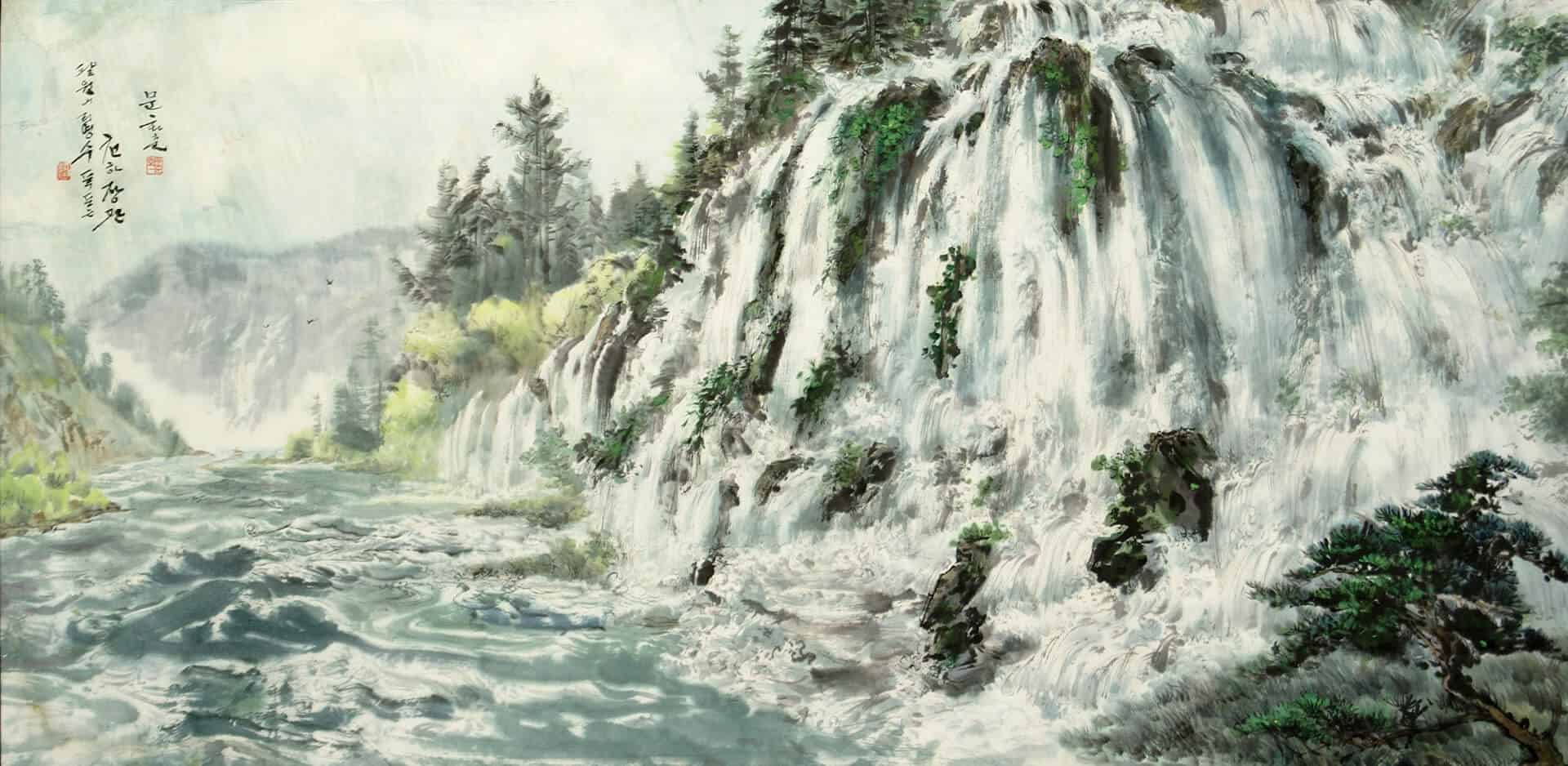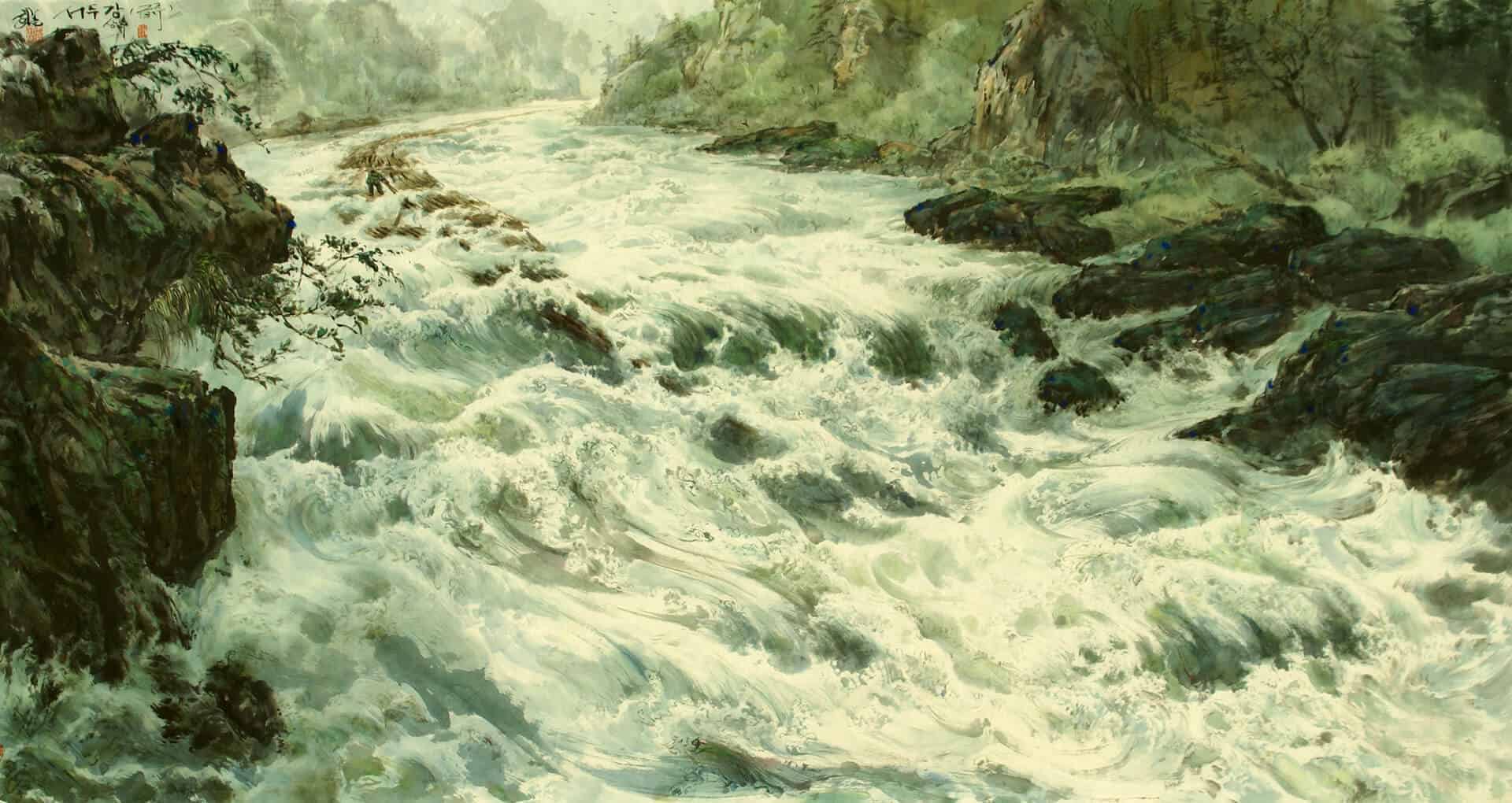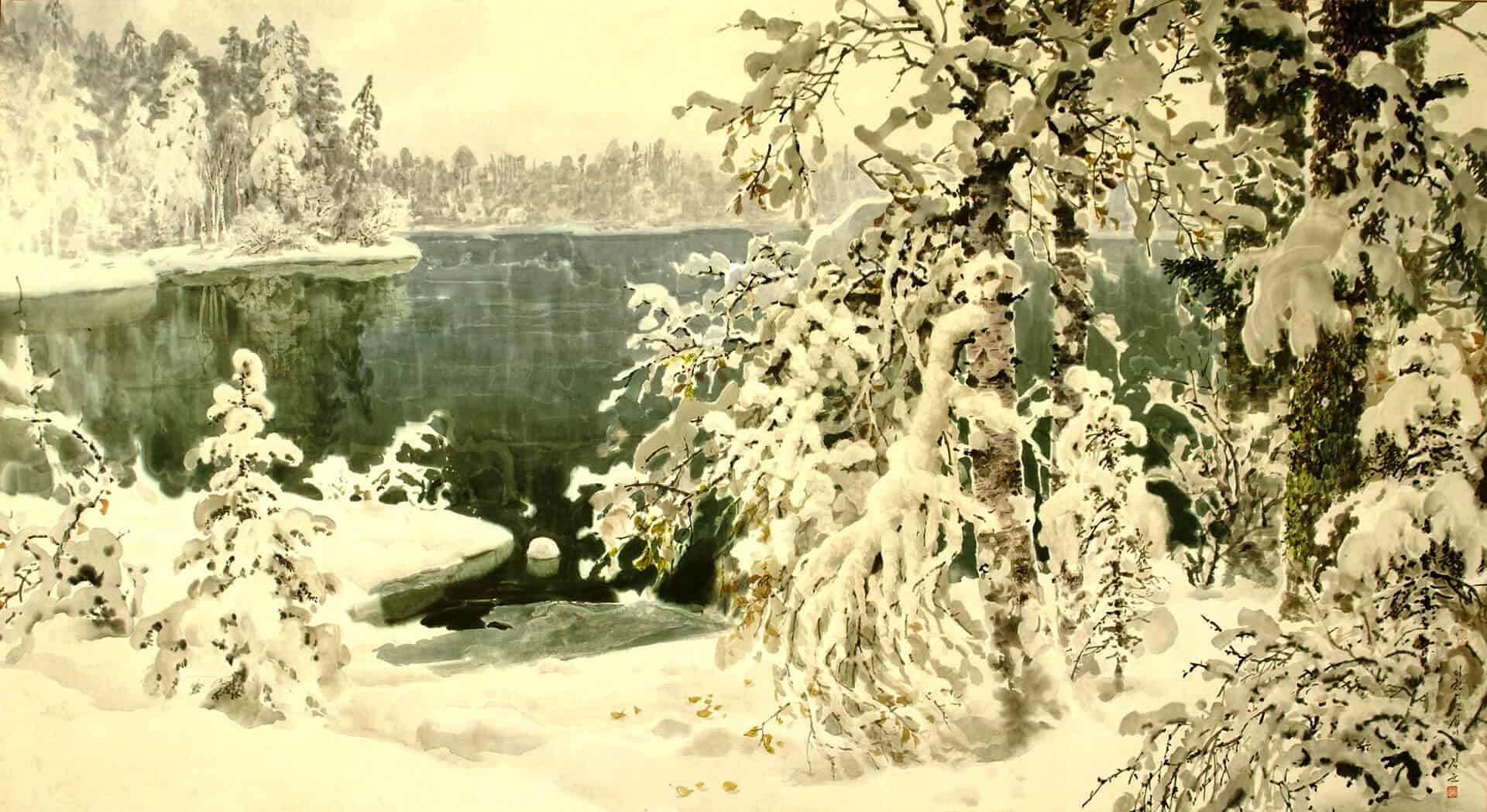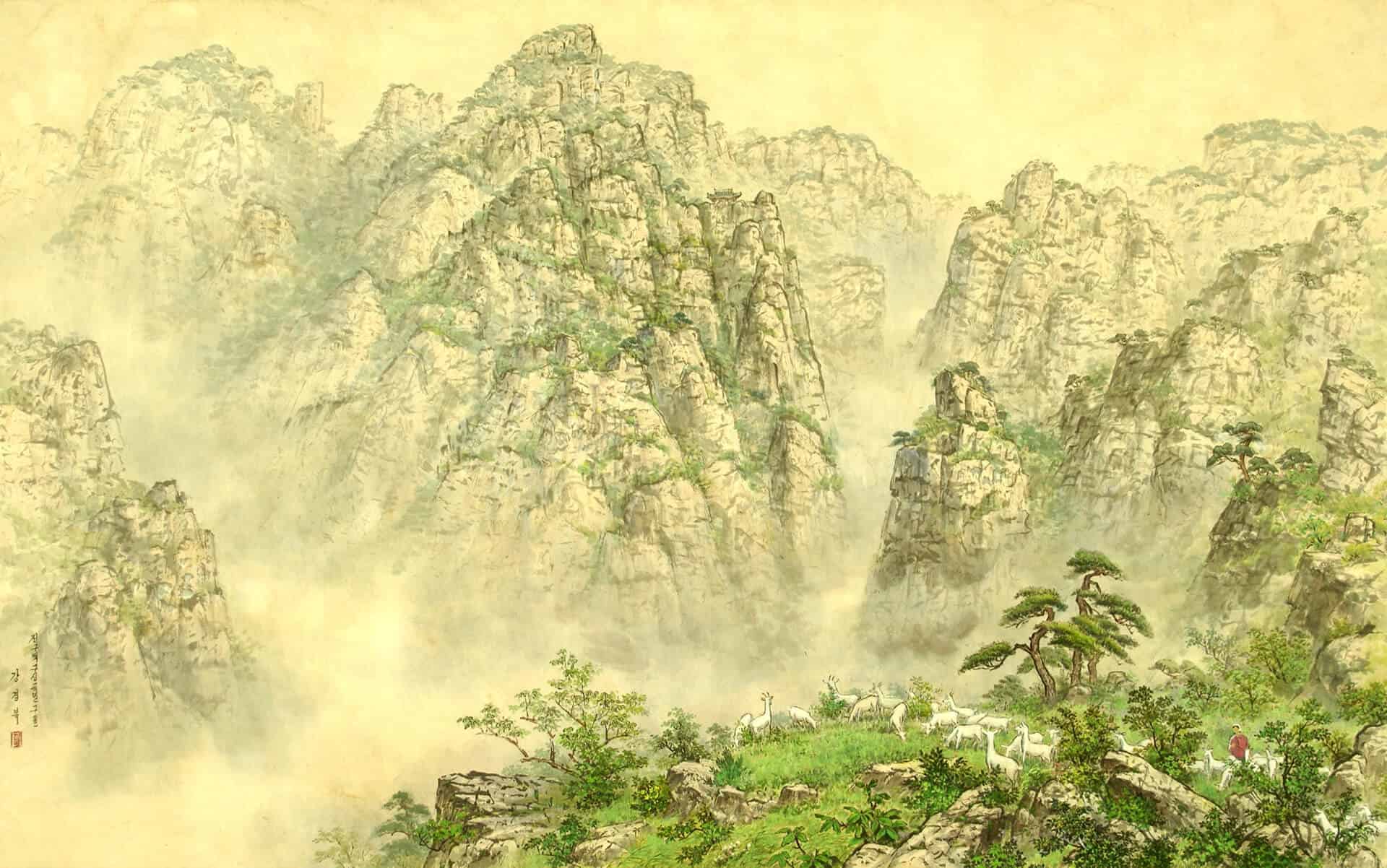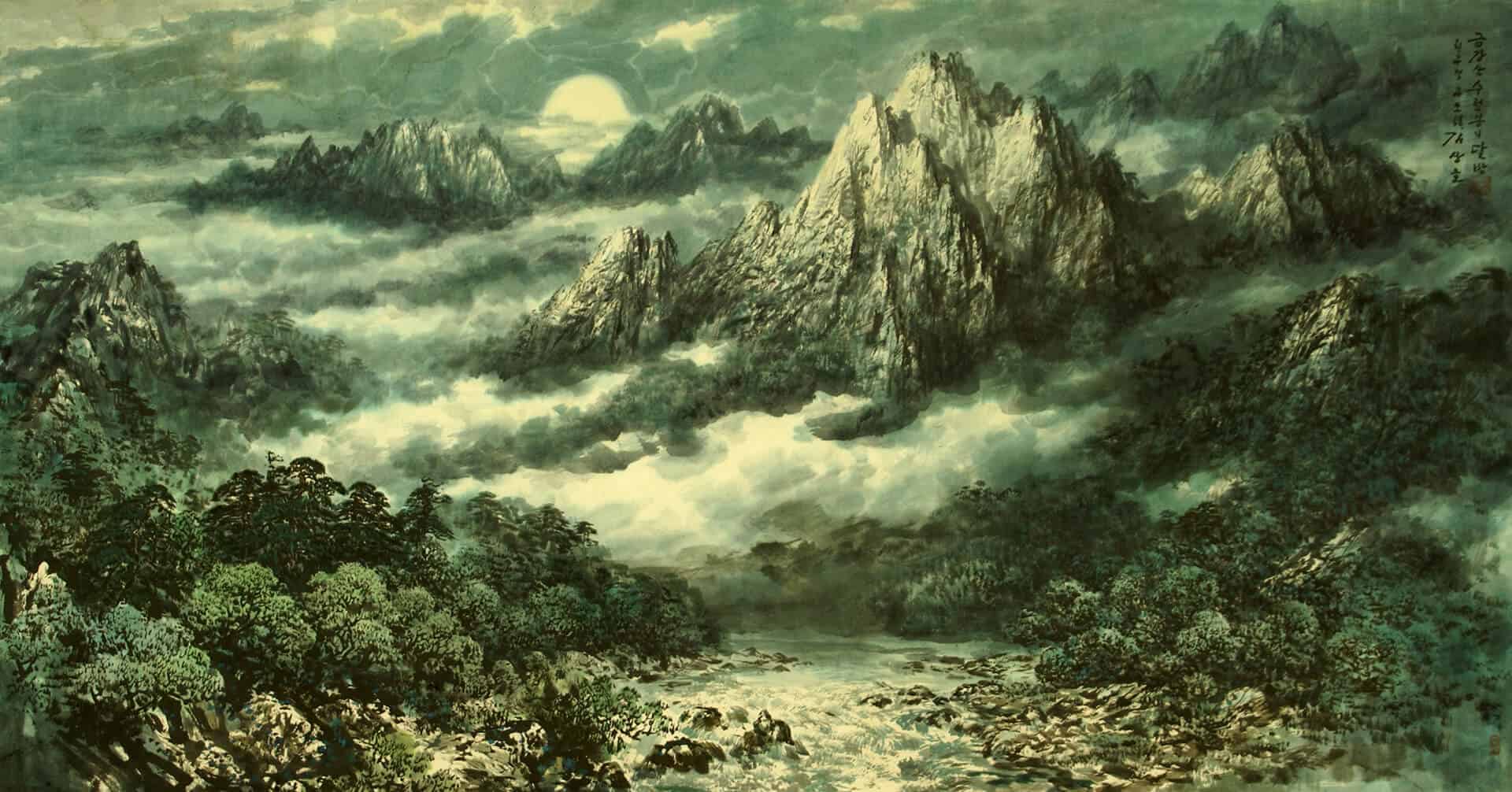Categories
All paintingsKorean landscape paintings
Landscape painting is a tradition that goes back a long way in East Asia. These depictions were not always accurate reproductions, but an essence of the artist’s reality. Making it more of a utopian vision.
Before the 18th century, Korean landscape paintings depicted mainly famous scenery in China, or were scenes of harmony imagined by the artist. When the Korean people started to reclaim their own historical and cultural heritage, they also rediscovered their own country’s beautiful nature. This is also called the ‘Koreanization’ of Korean art.
How landscape painting became a major genre
Landscape painting evolved as a major genre during the Joseon dynasty (1392–1910). Court artist An Gyeon drew a landscape painting for Prince Anpyeong in the 15ht century, called ‘Dream Journey to the Peach Blossom Land’. It is considered his masterpiece and has gotten much appreciation. His distinctive style shaped the direction of the landscape genre, but there was another Korean artist that influenced this genre. After traditional painting styles became more realistic, a style of landscape painting known as ‘True View’ became a national style in Korea. Jeong Seon (1676-1759) made Korean landscapes hugely popular, and is known to be the father of the Korean True View landscape.
The Kaesong Collection
The Kaesong Collection unfolds a stylistic and genre panorama of Korean contemporary painting and brings out two aspects in the development of Korean painting. One of them is associated with long art traditions of Korea, the Far East countries and their art heritage, the other, more modernist trends in the arena of world art. Still, the major subject of Korean painting remains, up to this day, the landscape.
WHAT IS THE KAESONG COLLECTION?
The Kaesong collection is a unique selection of high quality Korean art works. It is acquired in the most isolated country in the world: North Korea. These hidden treasures contain the finest contemporary and modern oil paintings, watercolours and drawings. They are created by Korean artists, like Jong Chang Mo, Son U Yong, Rim Ryul, Tak Hyo Yeon, Kim Sung Hui, Kim Song Min and many others. Among them are several prize winners at international exhibitions held in Asian countries. They are widely acclaimed in South Korea, China, Japan, The Philippines and Thailand.
HOW DID THE KAESONG COLLECTION CAME TO BE?
Curiosity, love for art and an interest in long-term investments in art made Frans Broersen (owner of Springtime Art Foundation) decide to visit North Korea. With intensive negotiations and help from the North Korean Embassy in London, he finally got the invitation from the Korean government by the Ministry of Culture of North Korea. After his first visit, Frans was confident of the possibilities and quality of North Korean art. Back home, he formed a team of people to combine knowledge, money and workforce to start purchasing works of art. Several visits and many acquisitions later, the Kaesong Collection took its shape.
WHAT IS TRADITIONAL KOREAN ART?
Korean art consists of paintings, calligraphy, music, mulberry paper art, decorative knot making, pottery like celadon, sculptures and other forms of art. The beauty of Korean art and the strength of its artists lies in simplicity, spontaneity and a feeling of harmony with nature. It values tenderness, a sense of balance, serenity and harmony. It is distinguished for its simple and elegant composition. The majority of today’s Korean artists still follow the path of tradition. Each nature’s motif gives meaning to a certain conception of value, such as spiritual strength, firmness, longevity and wisdom.
WHAT IS UNIQUE ABOUT KOREAN ART?
In the course of history, Korean culture and art has been influenced by Chinese styles, obliged by Japan during the Japanese occupation period (1910-1945) and inspired by European styles in the modern era. But it has always kept its own unique style, elements, traditional symbols and patterns. Which all have their own meaning and representation.
In Korean art you find the concept of naturalism, and it is characterized by its non-complex and harmonious composition, due to a deep connection with their natural surroundings. Korean artists try to portray nature as true to life as possible. And even though the art scene in Korea has been influenced by different art movements, it has over the past centuries developed a distinctive style of its own. Based on the rich traditional and cultural history of Korea.
WHAT IS THE MOST FAVOURITE SUBJECT OF KOREAN PAINTINGS?
- Popular genres throughout the centuries are:
- Daoist Paintings depicting the ten longevity symbols known as shipjangsaengdo. Which are: the sun, clouds, mountains, water, bamboo, pine, crane, deer, turtle and the mushroom of immortality. They are often all represented in a single picture.
- Buddhist and Confucian paintings; showing the Buddha and Confucian art portraying as scholars wearing the traditional stove-pipe hats and monochromatic robes. Usually depicted in a teahouse near mountains or at mountain lodges.
- Persian hunting scenes; often seen in Korean courtly art.
- Decorative Painting; the vast majority of ancient folk painting, were used for decorative purposes.
Popular subjects are:
- The Four Gracious Plants, also known as the Four Gentlemanly Plants
- Portraits
- Minhwa (Korean folk art)
- Genre and Landscape Painting
